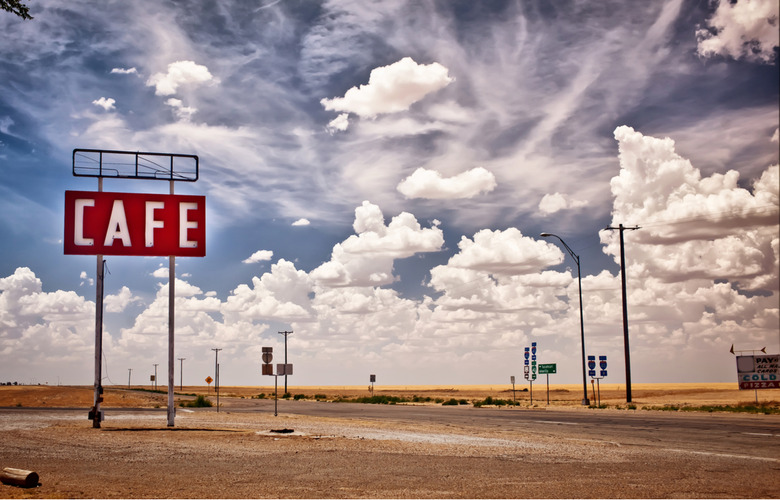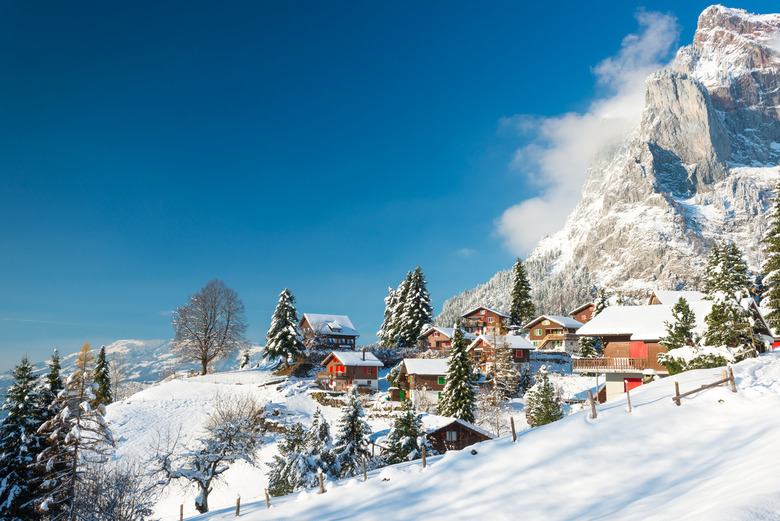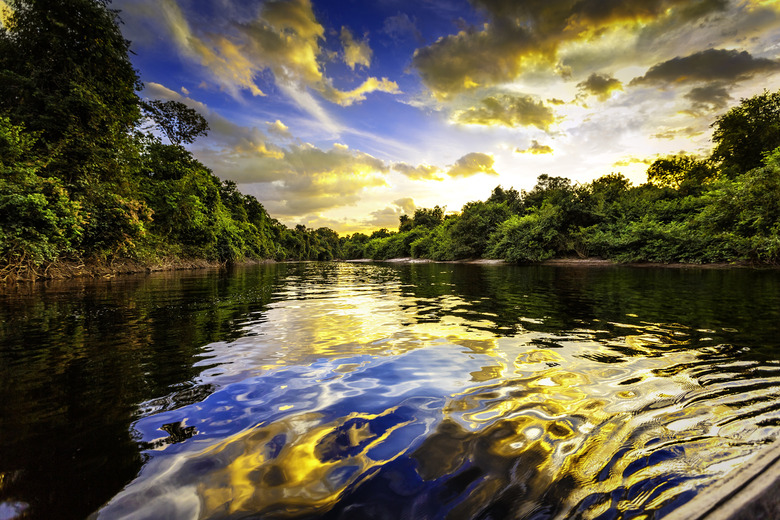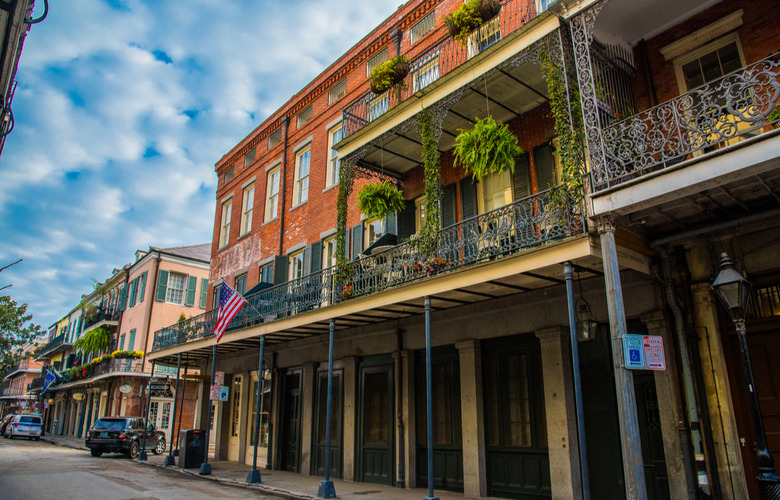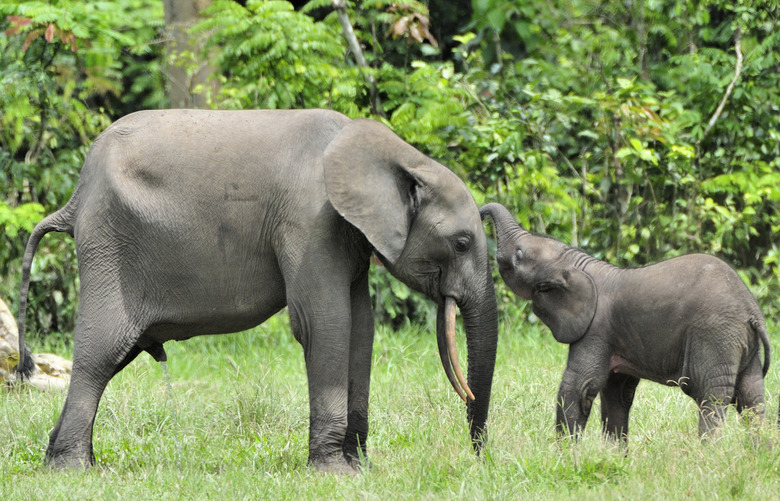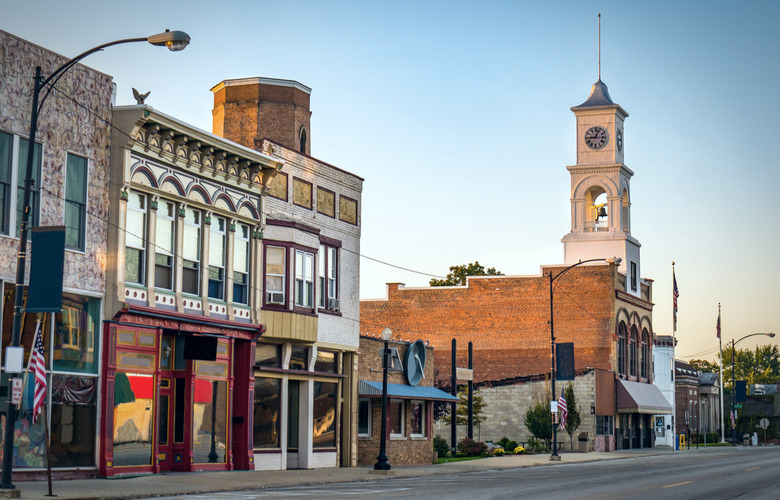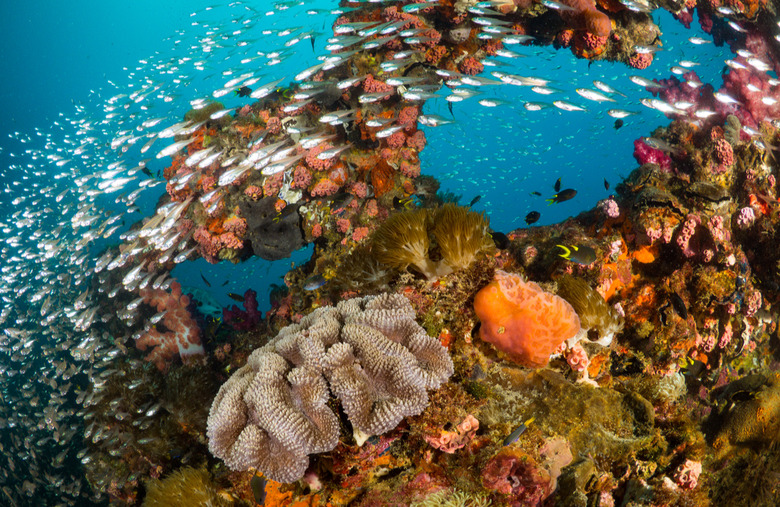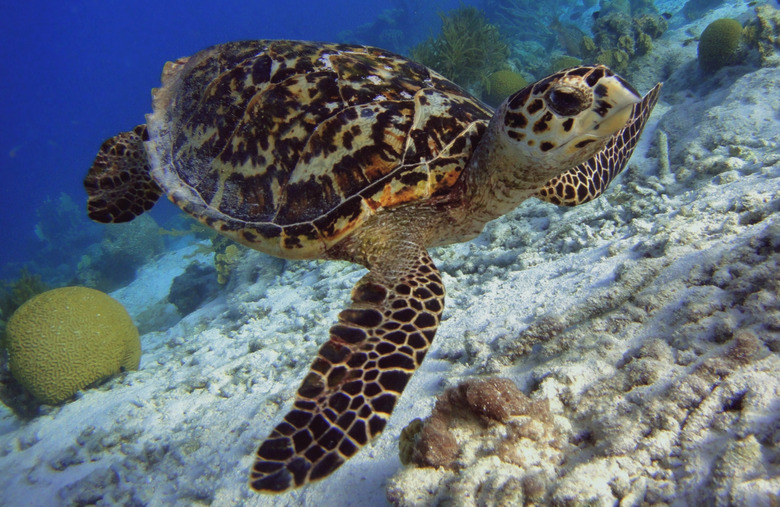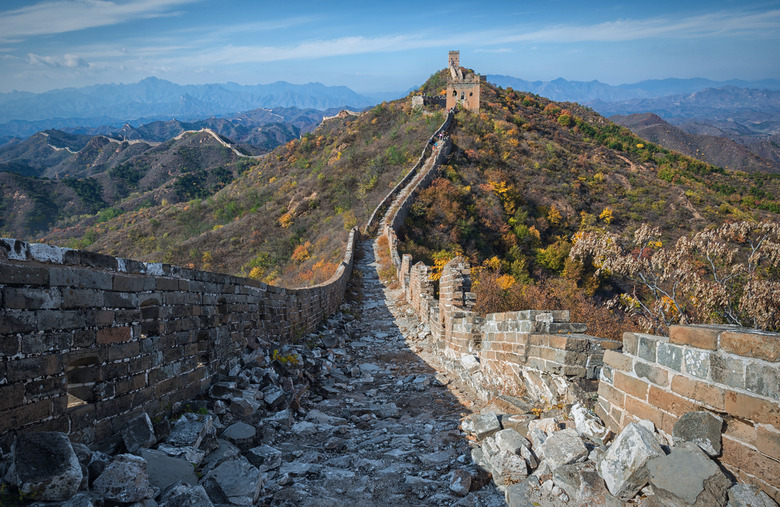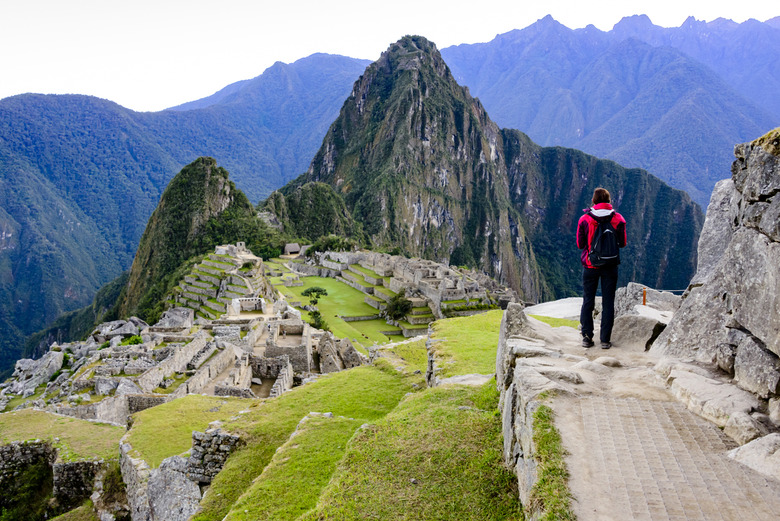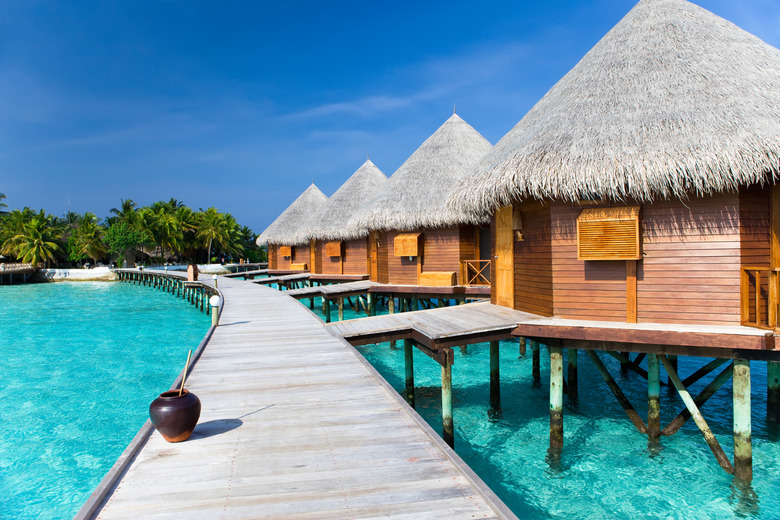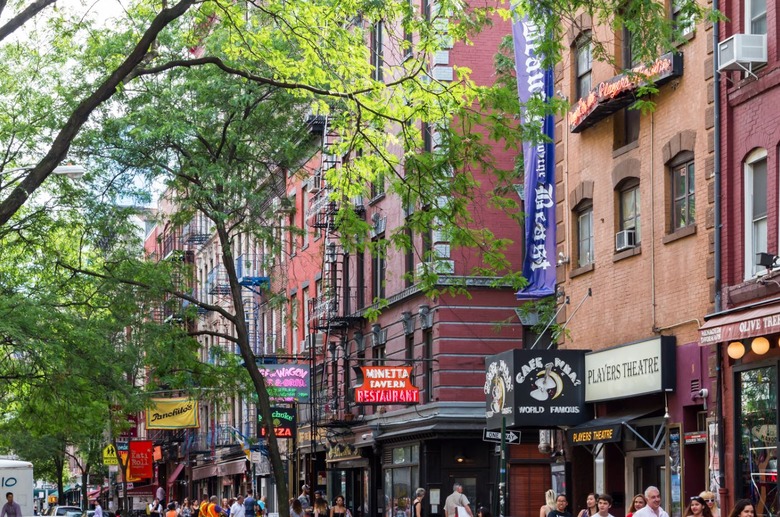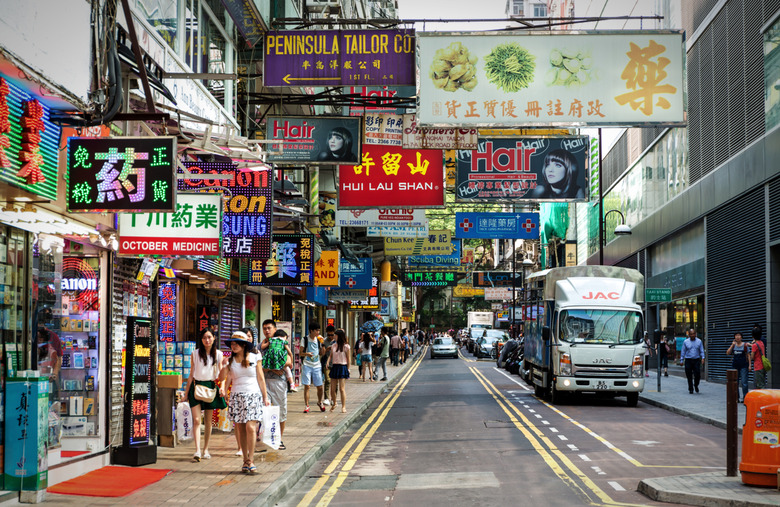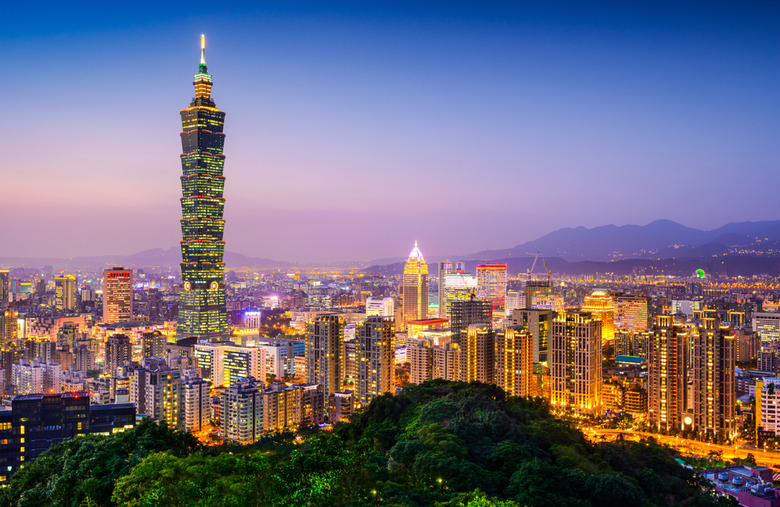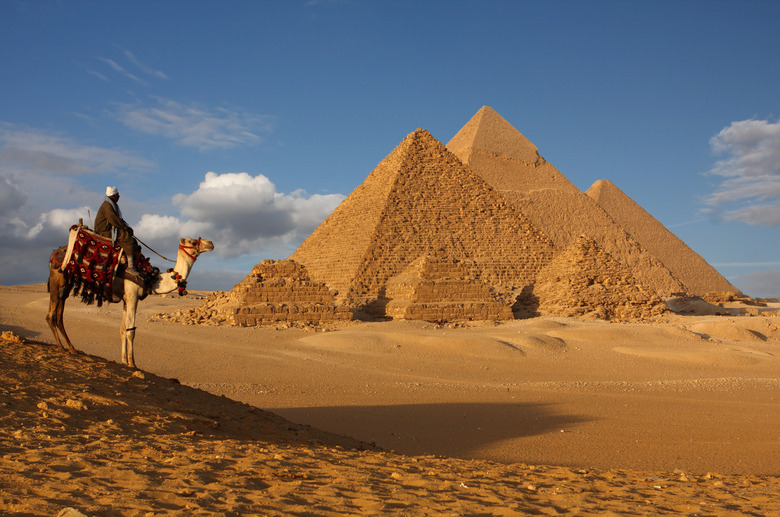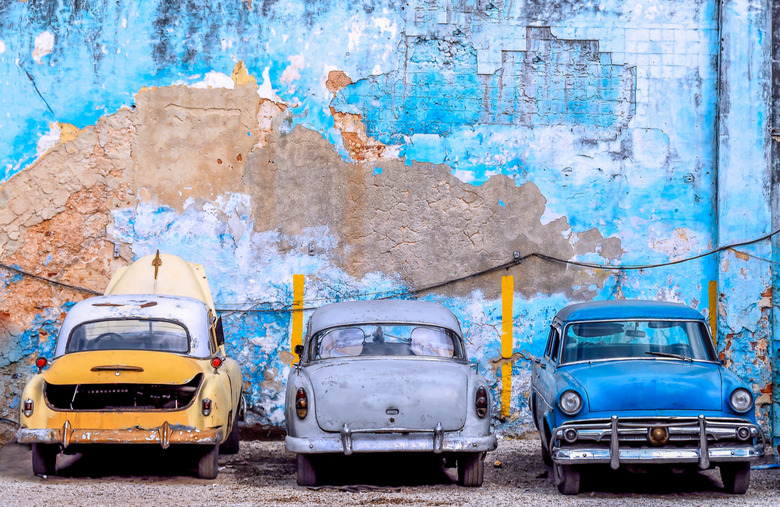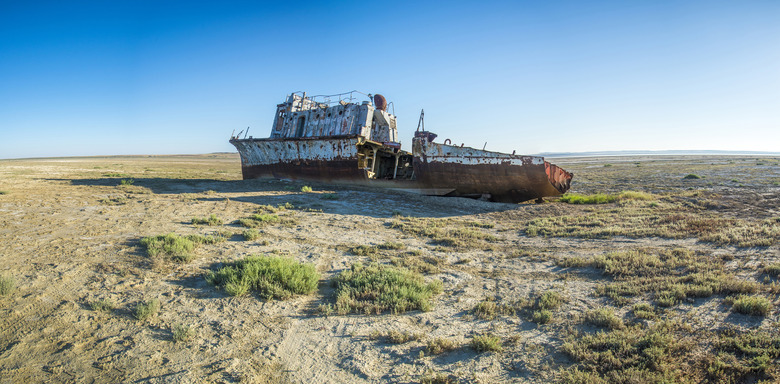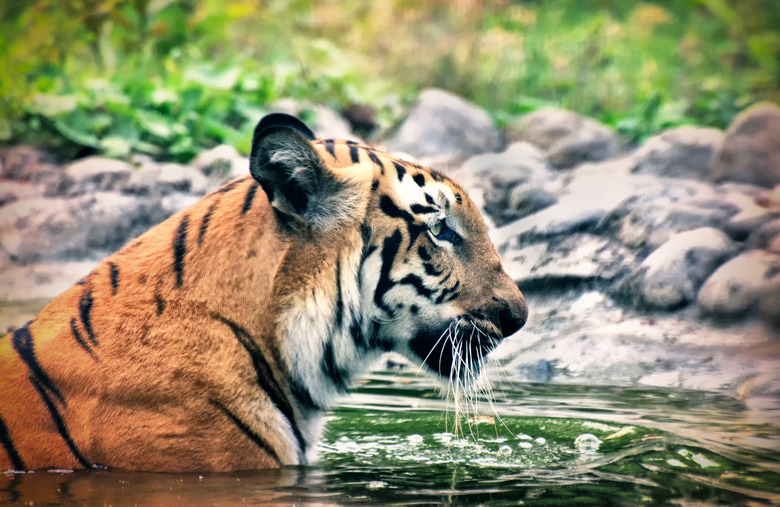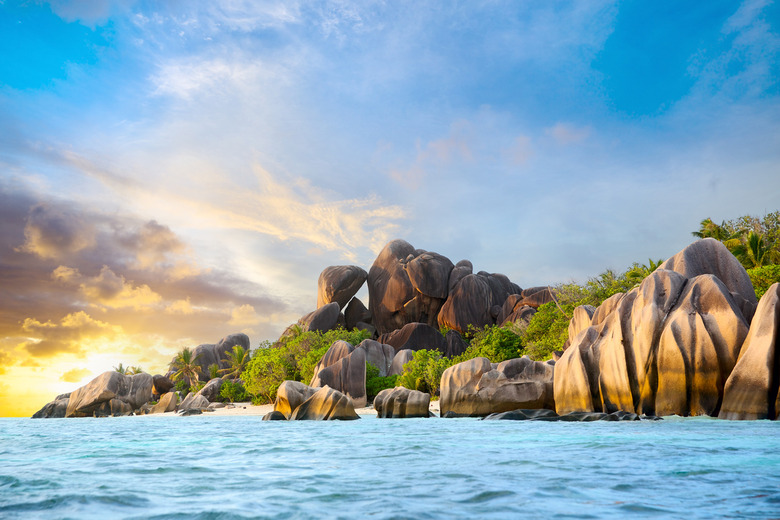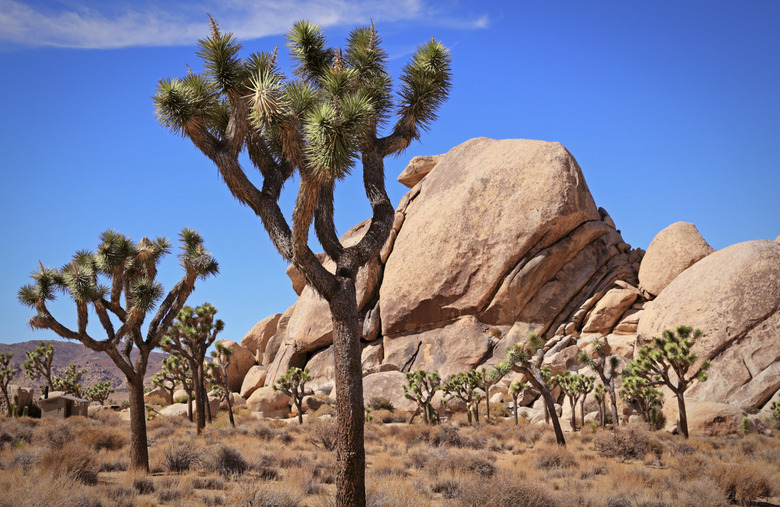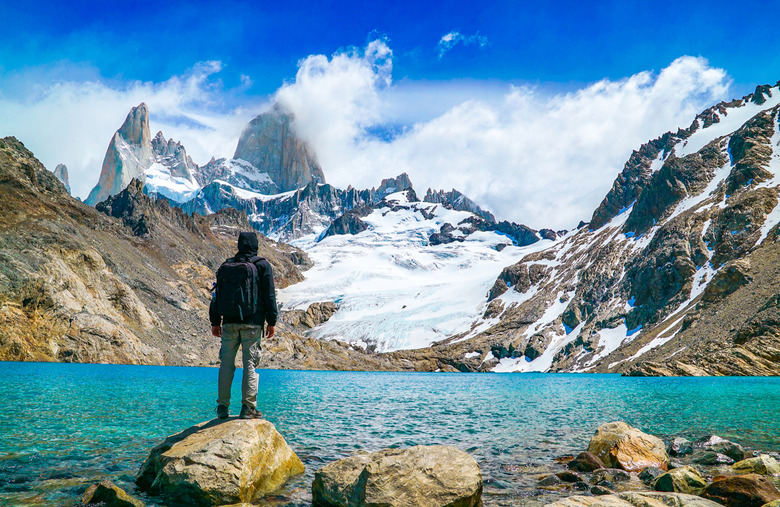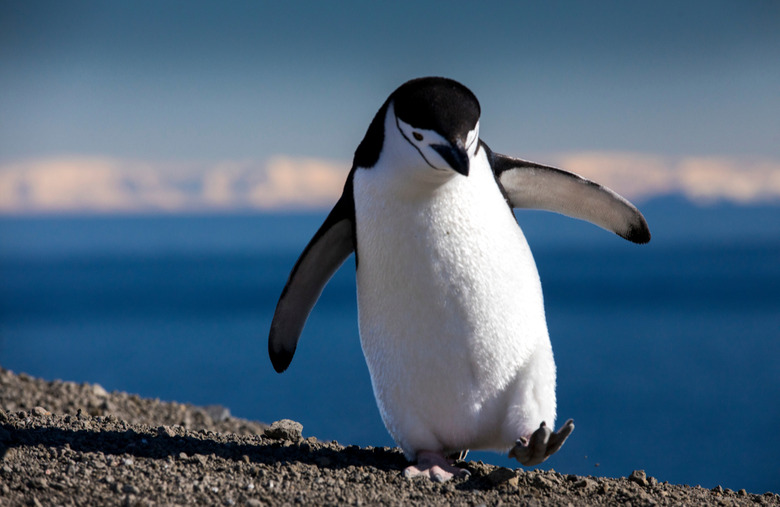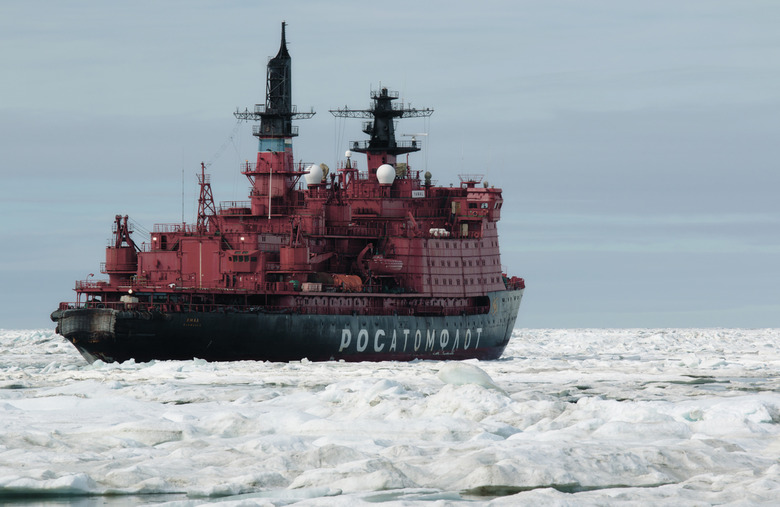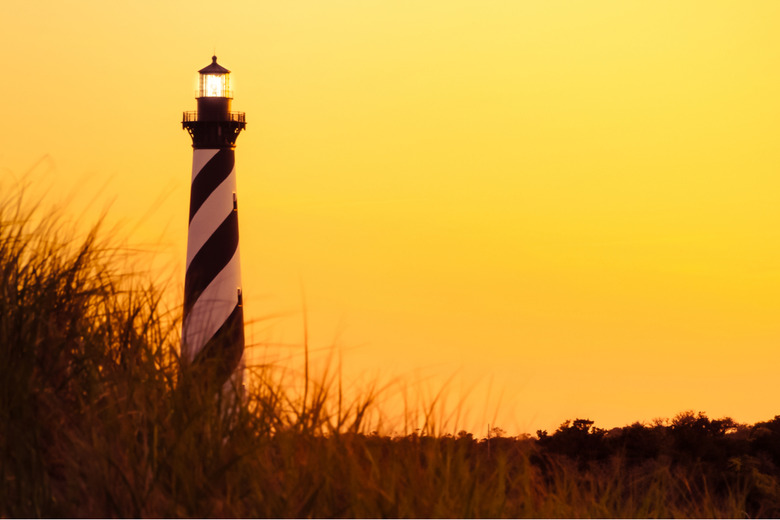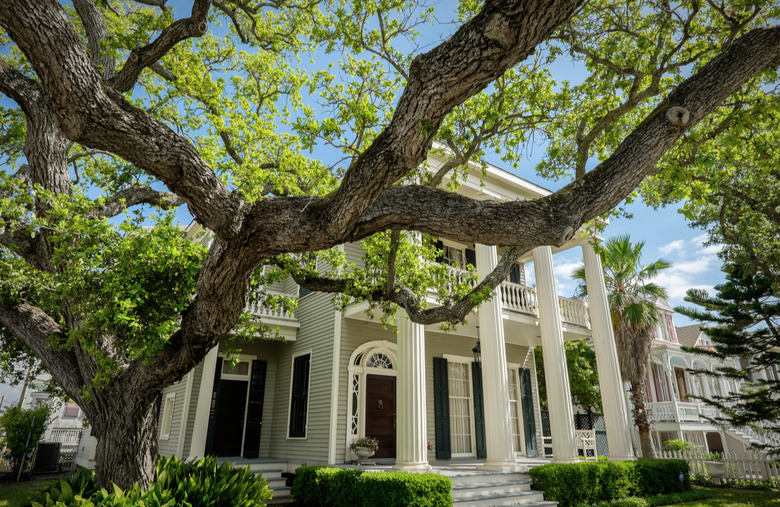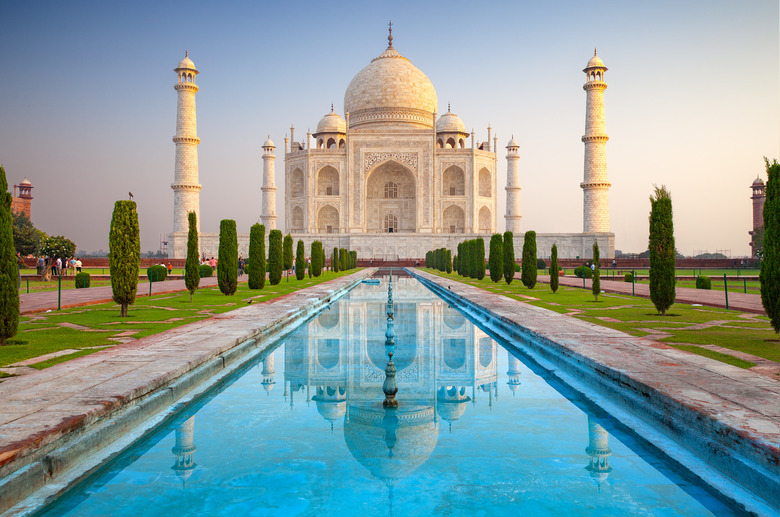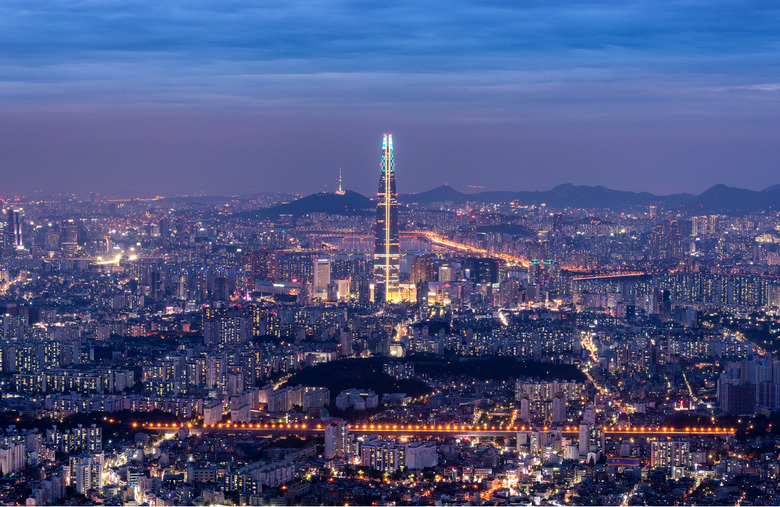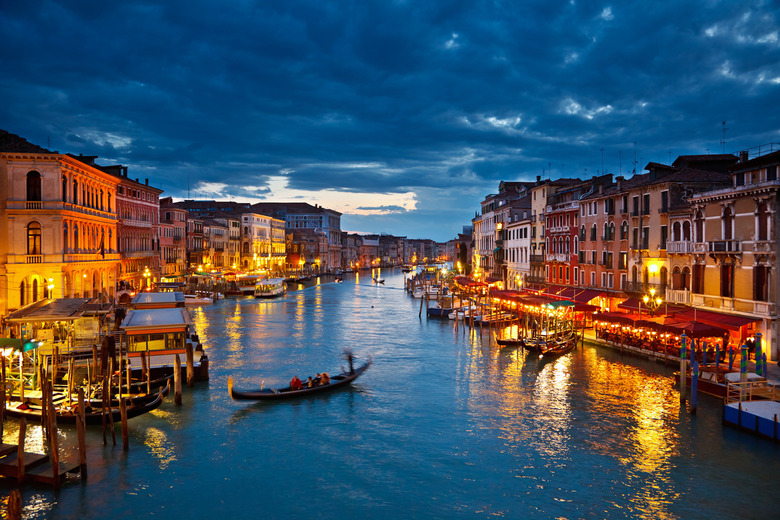Famous Places To Visit Before They Disappear
Among the top travel trends in recent years is what travel experts are calling "last-chance tourism," in which many travelers are rushing to visit places that may soon be gone for good. Thanks largely to climate change, many of the world's most recognizable and breathtaking destinations are in danger of disappearing forever.
But while melting ice caps and rising sea levels might make some beloved tourist spots literally disappear beneath the waves, other destinations are threatened by political or economic factors that could change them fundamentally. Sure, the Grand Canyon isn't going anywhere, but some other landmarks might. That famous snowy mountain you've wanted to visit might not be such a white wonderland once you get there if you wait too long, and that vibrant city might be a much different place than you had expected. To make sure you don't miss out, check out these famous places you need to visit before they disappear.
Syjil Ashraf and Jeremy Rose contributed to this story.
Route 66
America's "Mother Road" — traversed by pilgrims in literature from John Steinbeck's Tom Joad to Jack Kerouac's Jack Kerouac (err, "Sal Paradise") — stretches from Chicago to Los Angeles, but it was officially decommissioned in 1985. Many Route 66 businesses depended on long-distance travelers stopping in for a break, and that traffic now follows the newer interstates — so the time to visit these iconic American stopovers is fast waning. Thankfully, though, significant parts of Route 66 still exist and offer fantastic destinations for road-trippers.
The Alps
The Alps themselves may not be going anywhere, but the Alps as we know them may soon disappear forever. The glaciers of this European mountain range have been melting for over 150 years now, with an accelerated glacier retreat rate starting in the 1980s. By 2050, there may no longer be any glaciers at all, as the Alps lose approximately 3 percent of their glacial ice every year. Say so long to some of the world's best ski slopes, and some charming Alpine cultural traditions — you might have to settle for one of these American towns that look like Europe instead.
The Amazon
Comprising over half of the rainforest acreage left on Earth as well as over a third of the world's species of animals and plants, the Amazon is the largest and most biodiverse tropical rainforest in the world. Sadly, approximately 40 percent of the South American forest has disappeared over the last 40 years thanks to deforestation, mining and industrial agriculture, and it's still being actively wiped out — an area equivalent to 2,700 football fields was reportedly cleared every day on average as of 2018, and Brazil's recently elected president Jair Bolsonaro promised during his campaign to be even more permissive of logging.
New Orleans
One of the United States' most historic cities is also one of its lowest above sea level, which means that storm surges and oceans present an existential threat to the Big Easy. Roughly 80 percent of New Orleans was flooded by Hurricane Katrina in 2005, and 2019's Hurricane Barry flooded much of the Louisiana coast but miraculously spared the Crescent City. (The hurricane cocktail, one of Louisiana's signature recipes, may have been too cavalierly named — or maybe it's a testament to the city's resilience.) New Orleans has only been a few feet above water since its founding; visit now and try some of its spectacular food before it's underneath.
The Congo basin
The Congo basin, the fertile area around the Congo River located in Central Africa, produces a huge portion of the oxygen in Earth's atmosphere and is home to the world's second largest rainforest. Despite its extreme importance and incredible biodiversity, however, the basin has suffered due to deforestation, illegal poaching and mining. One major report in 2019 found that the Democratic Republic of Congo was losing more rainforest per year than any country aside from Brazil.
Small-town America
Americans have been abandoning small towns for major cities steadily for over a century, and 80 percent of Americans lived in urban areas as of the 2010 census. Young people seem to be accelerating the exodus — making small towns yet another cherished tradition that millennials have mercilessly killed. America's Main Streets are now more likely to host antiques dealers than general stores — which is all the more reason to cherish our nation's most charming small towns while they're still vibrant. Even if you're a suburbanite, it's worth visiting a small town to see the prettiest streets in your area or check out the best food festival in your state.
The Great Barrier Reef
Located off the coast of Queensland, Australia, the Great Barrier Reef is the largest coral reef system in the world. Made up of over 2,900 reefs and 900 islands, the reef lost half of its coral over the past three decades due to coral bleaching, ocean acidification and tropical storms. The United Nations' International Panel on Climate Change estimates that an average temperature increase of 1.5 degrees Celsius (which they expect we'll reach as soon as 2030) would wipe out 80 percent of the planet's coral.
Buck Island Reef
Just like the Great Barrier Reef, coral colonies closer to home — notably in the Florida Keys and the U.S. Virgin Islands — are threatened by climate change. Buck Island Reef National Monument just off of St. Croix is among the world's best islands for snorkeling, and it provides a crucial habitat for endangered animals that might also disappear, including the hawksbill sea turtle — but the two main species of coral around Buck Island are themselves endangered due to factors like seafloor erosion, increasingly strong storms and warming ocean waters.
The Great Wall of China
The Great Wall of China is more than 2,300 years old — and said to be haunted — but its time on Earth may be coming to an end. Tourist-friendly stretches near Beijing have been kept in good repair, but farming, tourist traffic, vandalism, erosion and the hands of time have led to thousands of kilometers — as much as one-third — of the famous fortification crumbling.
Machu Picchu
In addition to erosion and landslides, Machu Picchu is at risk due to an even more immediate man-made threat: tourists. The Peruvian government and UNESCO set a limit of 2,500 visitors per day in order to protect this beloved landmark, but with over a million visitors every year, that limit is far overrun, which creates more risk of collapse simply due to erosion caused by footsteps. It hasn't been determined just how much time the Incan ruins have left, but you'll want to see them while you can, since Peru is a must-see destination.
Madagascar’s Forests
Deforestation and forest fires have endangered the beautiful and impressively bio-diverse forests of Madagascar so immensely that they're estimated to have only about 35 years left on this planet. The island hosts untold numbers of undiscovered species, as well as 50 species of lemurs and two-thirds of the world's chameleons, but almost 90 percent of the island's original forests have already disappeared.
The Maldives
The Maldives, an island nation made up of 26 atolls (small coral-based islands) in the Indian Ocean, is a gorgeous destination with an average natural elevation of about 4 feet 11 inches above sea level, making it the country with the lowest elevation in the world. The country is at extreme risk of submersion thanks to climate change, as more than 80 percent is already less than a meter above sea level. According to the United Nations' environmental panel, the Maldives could be completely uninhabitable by 2100 if sea levels continue to rise at the current rate.
Manhattan
New York City certainly won't cease to exist anytime soon. But if you're hoping to see the next Bob Dylan poetizing in Greenwich Village, watch the next Patti Smith rummaging through curb furniture on St. Marks Place, or stumble upon the next Bruce Springsteen visiting to meet the characters for the next "New York City Serenade," you're already out of luck — skyrocketing rent prices mean that Manhattan's neighborhoods aren't necessarily where the city's most creative (and most broke) young people congregate. And high commercial rents have driven many of the borough's most beloved shops and restaurants to close, only to be replaced by anonymous chain stores and banks. You can still find some experimental theatre in the Village, though, or grab a torn-up T-shirt on St. Marks. Just don't expect to drop into CBGB; it closed and became a high-end clothing store in 2006.
Hong Kong
The island of Hong Kong was seized from the waning Qing Dynasty by the British Empire in 1842, and since then Hongkongers of every stripe have turned the territory into a cosmopolitan center of commerce, a center of international and Chinese cuisine, and one of the world's most densely populated places. The territory was returned to China in 1997 under the promise of a "one country, two systems" mode of governance. However, Beijing's encroachments upon Hong Kong's autonomy, most recently brought to the fore during mass protests in 2019, indicate that the city's freewheeling days could be numbered.
Taiwan
Taipei, the de facto capital of Taiwan, had a population under 1 million as recently as 1960 but has since burgeoned to become the 40th most populous urban area in the world, not to mention one of the world's best cities for coffee and one of the safest cities on the planet. The problem is that Taiwan is not technically its own country — not according to China, the United States, much of the international community or even the government of Taiwan itself. Taipei faces a constant looming threat from the People's Republic of China, and falling under mainland control at any point could change the island's character completely.
The Pyramids of Giza
Egypt is one of the top tourist destinations on Earth, and the Pyramids of Giza are the big draw. Having stood the test of time for over 4,500 years now, the famous Egyptian pyramids may be finally facing their demise due to erosion as a result of modern-day pollution from nearby Cairo. Sewage has also weakened the plates on which the monuments stand, and heavy tourism has also put their structural integrity at risk, and it's not unheard of for tourists to simply walk all over the complex. Theft, rising groundwater levels and urban development all also threaten this world wonder.
20th-century Havana
For decades, the classic cars prowling the streets of Havana have served as the most visible manifestation of Cuba's economic isolation. But after the fall of the Soviet Union, Cuba began welcoming tourists, first from Canada and Europe and recently even from the United States. The Trump administration recently rolled back some of the more liberal policies, but it's still more possible for Americans to visit Cuba now that at any point since the country's revolution. With more and more Yanks and Euros wandering around, Havana's famous time capsule quality is bound to erode.
The Aral Sea
Once the world's fourth largest lake, the Aral Sea in Central Asia has shriveled to a fraction of its former size. The culprit isn't global warming, but rather Soviet-era irrigation projects that diverted water from the rivers that fed the sea. You can still catch a glimpse of one of the remaining lakes, though the harbor in the former port city of Aral is now over 7 miles from the lakeshore.
The Sundarbans
The Sundarbans might not be a household name, but the nearly 4,000 square miles of mangrove swamps spanning Bangladesh and northeastern India host endangered and unique species like largetooth sawfish, river dolphins and the majestic Bengal tiger. These forests are located in the world's largest river delta, formed by the confluence of the Ganges and Brahmaputra rivers — which means they're right at sea level. The Sundarbans are threatened by increased salinity from rising ocean waters, pollution and human encroachment, and a sea level rise of just 1 meter will almost completely drown them.
The Seychelles
Brought into the spotlight as Prince William and Kate Middleton's honeymoon destination in 2011, the luxurious resorts, beautiful beaches and over 90,000 inhabitants of the Seychelles are in danger due to climate change and the accompanying beach erosion and coral bleaching that is taking away much of the island nation's beauty and livelihood. Located in the Indian Ocean, all 115 of the Seychelles' islands may sink completely into the ocean within the next 50 to 100 years, according to scientists' estimates.
Joshua Tree National Park
One of the most frequently misunderstood aspects of climate change is the fact that while humans can move from place to place or install an air conditioner for hot summer nights, trees are rooted where they are, often in tightly calibrated ecosystems that have adapted over thousands (or millions!) of years to thrive in particular climate conditions. The iconic trees in Joshua Tree National Park are vulnerable to long-term changes in temperature and precipitation that to most humans might barely be noticeable. Scientists worry the trees won't be able to move to more favorable territory because the giant Shasta ground sloth, which once dispersed the trees' seeds, went extinct 13,000 years ago.
Patagonia
American consumers might know the name primarily as an apparel brand, but Patagonia — the southernmost part of South America, home to fragile deserts and the Southern Hemisphere's largest glaciers outside of Antarctica — could be vastly reshaped by climate change. Scientists in Chile say the region's largest ice sheet split in two in 2018, and the glaciers here are melting as quickly as nearly any others on the planet. NASA scientists are actually studying Patagonia's glaciers to learn more about what Greenland and Antarctica might look like in the future.
Antarctica
Antarctica might not be on most travelers' bucket lists, but maybe it should be — one Daily Meal contributor visited the continent via cruise ship and had an incredible experience. It's no surprise that a continent covered with ice might be affected by global warming, and everything from changing temperatures to overfishing and plastic pollution could pose a threat to the fragile ecosystem those cute penguins call home.
The North Pole
It goes without saying that the Arctic ice cap is under significant threat from climate change. The Earth's north pole will exist as long as the planet's magnetic field does, but the ice that keeps Santa Claus' workshop above water is shrinking with each passing year. Time is probably running out if you want to replicate American explorer Robert Peary's over-ice expedition toward the pole, but there are already unforgettable cruises available aboard ships outfitted to break through the ice that still remains.
North Carolina’s Outer Banks
We can't blame climate change for these low-lying islands' precarious state — at least not entirely. North Carolina's Outer Banks have never been much more than sandbars, and they would be under threat from heavy storms and natural erosion even if sea levels weren't rising or storms increasing in magnitude. Cape Hatteras' iconic lighthouse had to be moved nearly 3,000 feet inland in 1999 due to shoreline erosion — a sign that the sorely underrated beach towns along this stretch of barrier islands should be visited sooner rather than later.
Galveston, Texas
Texas' oldest port city — once one of the busiest ports in the United States — was devastated by a hurricane in 1900, in what remains the most deadly natural disaster in U.S. history. Residents rebuilt behind a 17-foot seawall and even piped in sand to raise the street level, but the Oleander City's historic buildings are still ultimately resting on a barrier island that's not much more than a sandbar and would be extremely vulnerable to another powerful hurricane.
The Taj Mahal
Built in the 17th century by Mughal ruler Shah Jahan as the tomb of his beloved wife, Mumtaz Mahal, the Taj Mahal is a world-famous 42-acre landmark that also includes a mosque, a guest house and gardens. In addition to environmental pollution (particularly acid rain) turning it yellow, the Taj Mahal faces structural risks due to the decline of groundwater levels in the river basin where the structure lies. The tomb started to crack and its minarets began to tilt over in 2010, which was speculated to be the result of its wooden foundation rotting from lack of water. Observers of the Indian monument have reported that the cracks are worsening, and the tops of the minarets might even collapse outright.
The Sahel
The name Sahel may not be famous to most U.S. readers, but the northernmost stretch of sub-Saharan Africa is a culturally rich region that has been home to prosperous kingdoms and fabulously wealthy commercial hubs like the legendary Malian market city of Timbuktu. Unfortunately, these cities' grandest structures were built from vulnerable adobe, and today the always-dry region is under increased threat from rising temperatures, dust storms and desertification, which threatens to merge Sahel and Sahara completely.
Seoul
South Korea's capital is the center of a thriving metropolitan area of nearly 25 million people, home to irreplaceable historical treasures and a hub for culture and technology — and it's only about 35 miles from the demilitarized zone between North and South Korea, meaning that in the (hopefully unlikely) event of renewed hostilities on the peninsula, the city would be a soft target for North Korean rockets, conventional artillery, chemical weapons and (conceivably) nuclear weapons. South Korea's leaders have urged calm, but with unpredictable regimes in place in both North Korea and the United States, Seoul could be just a few propagandistic press releases or bellicose tweets away from a humanitarian catastrophe.
Venice
The center of one of 2017's biggest travel controversies when the city banned cruise ships, Venice is famously crisscrossed with canals and bridges because it's on a series of low-lying islands in the middle of a lagoon. As the city's wooden foundations sink over time, rising sea levels seem to be hastening the pending danger. There have been initiatives to stave off what some scientists feel is inevitable, such as a planned installation of mobile flood gates, but this historic island where visitors can step back in time may no longer be inhabitable by the end of the 21st century. If you're itching to hop on a plane and get to these famous destinations before time runs out, check out these 10 ways savvy travelers save on airfare.
More from The Daily Meal:
The 21 Least Visited Countries in the World
Famous Landmarks the Locals Hate

